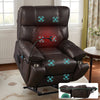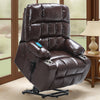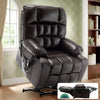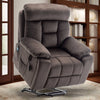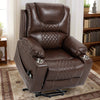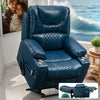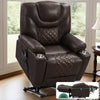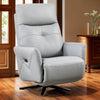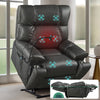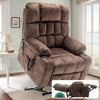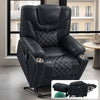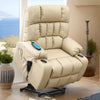Understanding Zero Gravity Technology in Office Chairs
The Science Behind Zero Gravity Design
Zero Gravity (Zero-G) technology in office chairs is inspired by astronaut seating. It aims to reduce spinal pressure by aligning the body in a way that mimics the posture assumed in space. This design distributes weight evenly across the chair. As a result, it reduces the stress that traditional chairs can exert on the lumbar area. By simulating a state of weightlessness, Zero-G chairs encourage a neutral body posture. This position helps decrease the load on the spine and increases blood circulation. The concept stems from NASA's discovery that in a zero-gravity environment, the human body assumes a relaxed posture that minimizes stress on the body. Office chairs with Zero Gravity design incorporate a reclining feature that can tilt the seat back. They also allow the legs to elevate, promoting this beneficial 'neutral posture'. With adjustable headrests and footrests, these chairs support the natural curvature of the spine. This results in a sitting experience that can help prevent the physical discomfort often associated with long hours at a desk.
Comparing Zero Gravity to Traditional Office Chairs
Zero Gravity office chairs significantly diverge from traditional office chairs in concept and design. Unlike typical chairs, which distribute weight unevenly across the body, Zero Gravity chairs are engineered to evenly disperse body weight. This alignment allows for minimized strain by positioning the body in a manner that reduces pressure on the spine and amplifies comfort. Traditional chairs often encourage slouching, leading to potential back problems and discomfort over time. In contrast, Zero Gravity chairs promote a reclined posture, mimicking the position of astronauts during launch, which optimally distributes body pressure and supports spinal health.
The Impact of Zero Gravity Chairs on Employee Health and Productivity
Ergonomic Benefits of Zero Gravity Office Chairs
Zero gravity office chairs offer unique ergonomic advantages for users. By mimicking the posture astronauts adopt in space, these chairs distribute body weight evenly. This reduces stress on the spine, lessens pressure on the hips, and diminishes muscle tension. The adjustability allows individuals to find the perfect seating position tailored to their body. Improved blood circulation from the reclined position also contributes to overall health. Users often report relief from back pain thanks to better spinal alignment. Adopting these chairs may lead to long-term wellness benefits for employees.
How Zero Gravity Chairs Influence Workplace Performance
Zero gravity chairs can greatly enhance workplace performance. Their design reduces strain on the body, fostering comfort and endurance. As comfort goes up, employees can focus better on their tasks. This leads to higher-quality work and less time off due to strain-related issues. Also, zero gravity chairs can improve circulation. This boosts energy levels. Ok blood flow means nutrients reach the brain faster, keeping minds alert. Lastly, these chairs can help lower stress. They create a relaxed stance, which can reduce anxiety. Calmer employees are better at solving problems and creativity. All these factors can lead to a more effective and efficient workforce.
Implementing Zero Gravity Chairs in the Workplace
Best Practices for Choosing Zero Gravity Office Chairs
When selecting zero gravity office chairs for your workplace, consider these best practices:
- Evaluate Ergonomic Attributes: Make sure the chair offers proper spine alignment, support for the lower back, and adjustability in armrests and headrest.
- Ensure Durability and Quality: Opt for chairs that promise longevity and are made from high-quality materials. Check for warranties and read reviews.
- Assess Fit: Choose chairs that can comfortably accommodate all body types, particularly focusing on adjustability and size options to fit diverse employees.
- Consider Aesthetics and Design: Select chairs that not only function well but also blend seamlessly with the office decor.
- Test Before Buying: If possible, arrange a trial period to ensure the chairs meet your office's needs and are well-received by employees.
By following these steps, businesses can make well-informed decisions that promote both comfort and productivity in the workplace.
Integrating Zero Gravity Chairs into the Workplace Environment
Integrating zero gravity chairs into the office calls for a strategic approach to ensure a seamless transition. Here are some straightforward steps to help with this integration:
- Space Assessment: Analyze the available space to accommodate the new chairs without crowding.
- Employee Orientation: Run workshops to educate staff on the correct use and benefits of zero gravity chairs.
- Pilot Program: Start with a few chairs to allow employees to experience them before a full roll-out.
- Feedback Loop: Establish a system where employees can provide feedback on the chairs' comfort and function.
- Adjustment Period: Give staff time to adjust to the new seating. Changes can feel strange at first.
- Ergonomic Training: Offer training on overall ergonomic practices to maximize the chairs' effectiveness.
By following these simple steps, businesses can smoothly integrate zero gravity chairs, fostering a healthier, more productive work environment.








